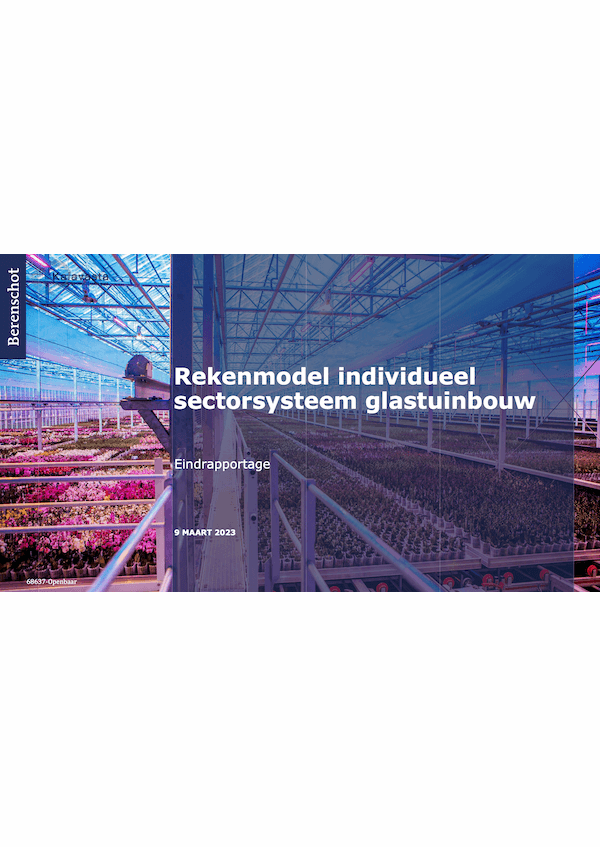CO2 sector system for Dutch greenhouses


The Netherlands has the most energy intensive agricultural sector in the European Union . It also has the highest share of energy consumption in the agricultural sector of the total national energy consumption. Unlike most EU countries, most of the energy use in the sector was not from oil and petroleum products, but from natural gas . This is due to the size of the greenhouse sector in the Netherlands. Greenhouses are an efficient way of producing food when compared to their land footprint. But they are also resource intensive, especially when it comes to energy. The greenhouse sector in The Netherlands was responsible for 96% of the natural gas demand in agriculture in 2020 . This energy demand stems mainly from the heating requirements of the greenhouses. To comply with the Paris agreement, the Dutch society, including its greenhouses must become climate neutral by 2050.
As heavy users of natural gas and electricity, the greenhouse sector is heavily impacted by taxation of energy. The greenhouse sector currently has an arrangement for lower taxation for natural gas and electricity in combination with an emissions ceiling. This arrangement, the CO2-sectorsysteem, is in effect until the end of 2024, as agreed in the coalitieakkoord, to comply with the national emission reduction goals. This study was carried out as a preparation for the new CO2-sectoorsysteem that will be active 2025. The ambition was to assess the effects of different kinds of alternative taxation schemes on different kinds of greenhouse companies. Based on the costs of applying technologies that allow greenhouses to reduce emissions and the costs of a baseline situation, in which greenhouses pay for the costs relating to the existing fossil technologies and the CO2 costs, this study could estimate the rate at which greenhouses transition to carbon neutral technologies.
For this project, a model that was custom built by Kalavasta and Berenschot was used. The structure of the model consists of three parts. The first part includes a calculation of the business case and the associated emission reductions for different types of companies in the greenhouse sector. The corresponding data and calculations about company types and renewable options for the greenhouse sector were collected from and validated with Wageningen Economic Research, Eneco Agro Energy and AABNL. This calculation indicates per year which types of companies have a positive business case for transitioning to a more sustainable production. In the second part, an estimation is carried out on the number of companies that would be able to switch to more sustainable production when they have a positive business case. This gives an indication for the baseline rate of the transition of the sector. The third part of the model gives an indication of the CO2-price that is required for meeting the ambitions of CO2 emission reductions in the greenhouse sector in 2030. In an iterative way, this CO2 price for different taxation schemes can be found by feeding it into the model. The model uses this price increase in the business case of the company types. The total CO2 emissions, the ways companies reduce CO2 emissions and the additional costs for each company type are subsequently calculated to give an indication of what the sector would look like in 2030.
The main result is that both systems have the capabilities to decarbonize the sector. If the tax regulations mentioned in the first bullet are in order, the variants are rather similar since the CO2 price will be relatively low. For some company types, the first variant will generate extra income, whereas in the second one, all company types initially have to pay for the carbon tax and might get it back via subsidies. The first variant is slightly more effective in achieving the goal to decarbonize the sector at the lowest costs. This is the case because it puts the right incentive at the right company. If a company can decarbonize, it will do so to either pay less for the carbon credits or to gain extra income by selling carbon credits. The second variant creates a certain amount of subsidies, which have to be distributed in a fair way to the company types that can decarbonize with the lowest costs. There is no general allocation method to get the correct amount to the right company by using general subsidies, which makes the second method in general less efficient.
The results were used as one of the inputs to determine the most appropriate variant . Other criteria were also used in this decision. The second variant was chosen since it is a simple and clear variant that equally taxes each emitted ton of CO2. The CO2 price will be determined at a later stage once the tax regulations for the greenhouse sector are finalized.